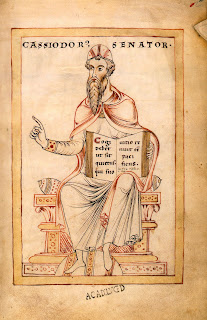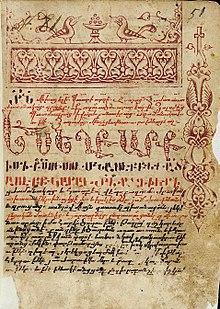Darkness that was Felt: Nuclear Winter 536 A.D. and the Mystery Behind the Worst Year to be Alive
“And the LORD said unto Moses, Stretch out thine hand toward Heaven that there may be darkness over the land…even darkness which may be felt.” EXODUS 10: 21 KJV
“The sun gave forth its light without any brightness, like the moon, during the whole year.”
So goes the account, not from the Plagues of Egypt as recounted in the Biblical Book of Exodus, but from the personal correspondence of the famed 6th century Byzantine Historian Procopius.
Procopius was the right hand man to the Emperor Justinian. He was the principal historian for all of Byzantium in the early middle ages, known for his erudition, learning and literary style. Today, Procopius is most famous for his work entitled History of the Wars which is a voluminous series of histories that deals primarily with Byzantium’s struggles against the neighboring Sassanid Persian Empire.
When Procopius gave his account of the darkened sun he was writing specifically about the year 536 A.D. The year 536 is a year that Harvard University Professor and Historian Michael McCormick has referred to as, “The beginning of one of the worst periods to be alive--if not the worst year.”
 |
| Procopius |
In the early part of the year 536 A.D. much of the world--all of Europe, the Middle East and most of Asia and Africa--descended into literal darkness and remained that way for eighteen consecutive months!
A mysterious, opaque and grayish fog covered most of the earth that year and caused average worldwide temperatures to drop by over two degrees Fahrenheit in the span of only a few short weeks.
As a result, as Procopius states specifically about the year 536 A.D., “Men are free neither from war, nor pestilence nor any other thing leading to death.”
Dark.
Because of the fog which inexplicably settled over Europe in the first few months of 536, and stayed there for over a year, Cassiodorus, a well respected Roman statesman and scholar of the time stated, “We marvel to see no shadows of bodies at noon.”
Cassiodorus, who himself had been born on the Italian Peninsula sometime around the year 485 A.D., was by the year 536 an affluent and well connected writer and dignitary working for the western Roman administration of the Ostrogothic Emperor Theodoric the Great.
As a native Latin speaker, and a man who was well read in the Grecco-Roman classics of antiquity, Cassiodorus was one of the most admired and respected writers and chroniclers of his time. He stated of the year 536 that the, “sun is a bluish color,” and that, “the moon has lost its luster.”
But Cassiodorus didn’t keep his comments limited to just the celestial bodies of sun, moon and stars when it came to the dire calamity that befell the world in the year 536. He also asserted that even, “The seasons themselves seem to have been all jumbled together.”
 |
| Cassiodorus |
Today it is generally agreed by scientists, climatologists and historians that the years 536 to roughly 540 marked the most severe and protracted period of climate change in the last tw0-thousand years.
Some modern scholars have compared weather conditions in the year 536 to those of a “Nuclear Winter”. Nuclear Winter is a term used to describe the catastrophic and prolonged global cooling that many scientists and experts believe would occur as a result of the fallout from a large-scale nuclear war. The hypothesis behind Nuclear Winter is based upon the large amounts of soot and debris which the atomic explosions over Hiroshima and Nagasaki projected into the earth’s atmosphere at the end of World War Two. It is believed that were enough nuclear explosions to occur on earth within a short enough period of time then the sun may be permanently blotted out from debris in our atmosphere causing a permanent “Nuclear Winter” state to descend upon planet earth much as it did in the year 536 A.D..
The combined calamities of persistent dense and unrelenting fog and dropping temperatures accompanied by bone-chilling cold even during the heart of Summer caused crop failures, subsequent famine and complete economic stagnation to befall the densely populated areas of the mediterranean basin and the Middle East between the years 536 and 540.
Things were so bad at this time in history that over six hundred years later in the 12th century, influential church chronicler Michael the Syrian would write, “The sun was dark and its darkness lasted for eighteen months, each day it shone for about only four hours, and still, the light was only a feeble shadow. The fruits did not ripen and the wines tasted like sour grapes.”
Michael the Syrian’s historical chronicles, despite the length of time that has passed since they were written, are considered so reliable since he was able to use both Byzantine and Arab primary sources to compose his histories that climatologists and even NASA use his Chronicle today to study the overall effects of climate change and to gain insight into meteorological history.
 |
| Chronicle of Michael the Syrian |
And then, in 541 the very year that the Nuclear Winter finally seemed to lift, things got even worse! That year Constantinople, and all of the Byzantine Empire which stretched from Rome to Persia, was struck by the Plague of Justinian. The Plague of Justinian is believed to have been the same form of “Black Death” or pneumonic plague which swept across Europe during the high Middle Ages in the 14th Century.
Brought to the densely populated cities of the Byzantine Empire by the infected fleas of rodents from the far east, Justinian’s Plague is thought to have killed as many as half a million people in Constantinople alone!
For years it was believed by scientists and historians that the catastrophic year 536 A.D., what many consider even today to have been the worst possible year to be alive, was caused by an enormous volcanic eruption that occurred in Iceland sometime around late 535 or early 536 A.D.
During the mid-1990’s researchers in Ireland examining tree ring data from some of the Emerald Isle’s oldest trees found evidence to suggest that the earth’s temperature may have dropped by as much as two degrees, overall, in that single year and that the sun was indeed dark for an extended period of time.
These findings in the 1990’s confirmed the information and reports provided by the Byzantine and Roman chroniclers of antiquity, and they also seemed to give credence to the theory of a volcanic eruption in either Iceland, or perhaps the faraway Pacific Islands, as having been the cause behind the doomsday fog of the year 536 A.D.
But then, that all changed in February of 2004 when scientists working out of the University of Cardiff in the United Kingdom reported that the same tree ring data showed that it was a comet which had collided with the planet earth in the sixth century and caused what they termed, “the Nuclear Winter,” of 536.
This data was first reported in 2004 and then reported again at the end of 2008 in The New Scientist. Researchers from the University of Cardiff argued that the tree ring data showed evidence of something called a “plume” or rise in the tree rings which were consistent with other plumes that had been found to represent asteroid or meteor impacts in prehistory.
 |
| Justinian's Plague 541 |
The debate over what caused the Nuclear Winter of 536 A.D., and made that year the worst possible year to be alive, continues to rage. There are proponents on both sides of the issue. Some point to the worldwide effects of other volcanic eruptions throughout history, most notably those of Tambora and Krakatoa as recently as the 1800’s, as irrefutable proof that the climatic change of 536 must have been caused by a volcanic eruption.
Others argue that the cold and darkness, the Nuclear Winter of 536 A.D. if you will, was so harsh and so all-pervasive across the known world at the time, that something much larger and unprecedented than a volcanic eruption, something more like the impact of a comet from outer space, must have been responsible for the near doomsday scenario that was the year 536.
In the end, the debate over what caused the catastrophic events of the year 536 A.D., the year when darkness was literally felt across the world, doesn’t matter all that much. What does matter is that all of the evidence points to the fact that we can believe and trust the harrowing accounts of ancient historians and chroniclers like Procopius, Cassiodorus and Michael the Syrian who so long ago put pen to paper to report on a dark time in human history that may have been the worst year to be alive.




I'm sorry if I missed it, but what caused the darkness and fog?
ReplyDeletethe debate is going on there are two posible answers. Either volcanoes or a comet.
ReplyDeleteThat is true. The debate is ongoing with convincing evidence on both sides. Thank you for taking the time to read and comment.
DeleteWhat a fascinating read! How absolutely horrible it must have been to live through this.
ReplyDelete